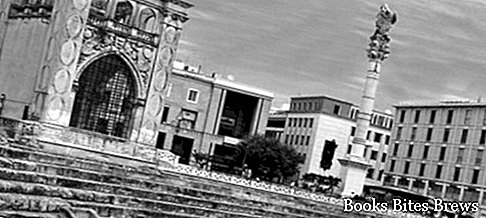What to see in Lecce, itinerary including the main monuments and places of interest in this city of Salento, located 11 km from the Adriatic Sea and 27 km from the Ionian Sea.
Tourist information
The ancient part of Lecce is enhanced by beautiful Baroque architecture and sculptures, made with local stone, known precisely as Lecce stone, which has the particularity of being easily modeled at the time of processing and acquiring compactness with the passage of time , taking on warm shades of amber color.
Lecce draws its origins from a Roman settlement called Lupiae, which arose in the third century BC, near a Messapian center that gradually lost importance following the emergence of this new city.
For five centuries Lecce was part of the Eastern Roman Empire, after the year 1000 it was instead dominated by Normans, Swabians and Angevins, until the fifteenth century, when it became an important center of the Aragonese.
In the sixteenth century the Spaniards arrived, under Charles V the walls and the Castle were rebuilt, as a defense against the recurring Turkish incursions.
The layout of the historic core of Lecce dates back to this period, when the construction of the Basilica of Santa Croce, the Church of Sant’Irene dei Teatini and the Palazzo del Seggio or Sedile began.
In the seventeenth century the city changed its appearance, following the creation of splendid works in the Lecce Baroque style.
Deep transformations were carried out in Piazza Duomo and its buildings, as well as new constructions, including Palazzo del Governo, ex Convent of the Celestini, and Churches of San Matteo and Santa Chiara.
What see
Piazza Sant’Oronzo, which constitutes the city center, has at its center the Roman column surmounted by the statue of the Saint, protector of Lecce after the terrible plague epidemic that struck the Kingdom of Naples in 1656.
On the square it is possible to admire about a third of the Roman Amphitheater, while the remaining part is still hidden in the subsoil, in various points above which there are various buildings, including the Baroque church of Santa Maria della Grazia, located in front of the Amphitheater, Palazzo del Seggio, known as the Seat, with the former church of San Marco next to it, built in 1543 at the behest of the Venetians residing in Lecce.
Piazza Duomo is one of the rare examples of a closed square.
Recommended readings- Trani (Puglia): what to see
- Puglia: Sunday day trips
- Manfredonia (Puglia): what to see
- Vieste (Puglia): what to see
- Altamura (Puglia): what to see
A propylaeum crowned with a balustrade with statues, serves as an entrance to a harmonious and scenic arrangement of fascinating Baroque buildings, including the Cathedral, built between 1659 and 1670 on a twelfth-century church, the Seminary and the Bishop's Palace, built between the sixteenth and seventeenth centuries, on the site of another building dating from the fifteenth century.
The Basilica of Santa Croce, built from 1549 and completed in 1695, together with the adjacent Government Palace, former Celestine Convent, is defined as the most important example of Lecce Baroque.
The Church of Saints Niccolò and Cataldo, located just outside the center of Lecce, was founded in 1180 by Tancredi d’Altavilla.
The facade is in Apulian Romanesque style, with Baroque elements added during various subsequent renovations of the building.




